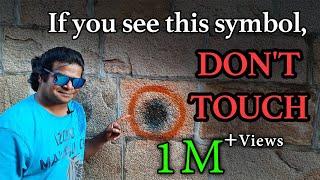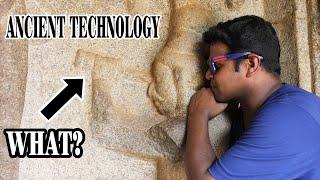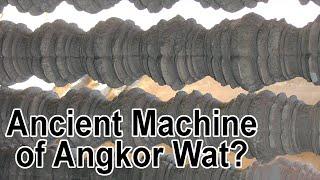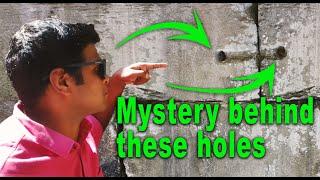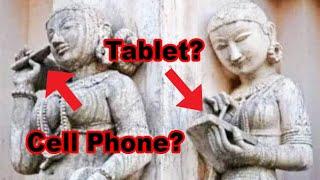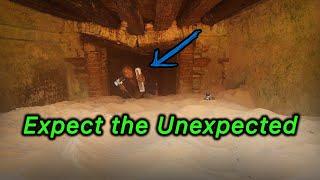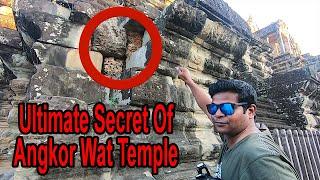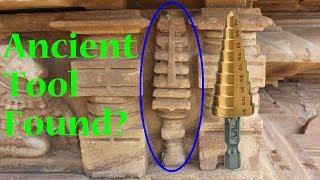Decoding the SECRET OF NAGAS | Lost Technology Hidden in Ancient Temples | Praveen Mohan
Beschreibung
Facebook.............. https://www.facebook.com/praveenmohanfans
Instagram................ https://instagram.com/praveenET
Twitter...................... https://twitter.com/IamPraveenMohan
Email id - phenomenaltravelvideos@gmail.com
https://www.youtube.com/watch?v=CsAXTd3IoNU
This is my Patreon account if you like to support me - https://www.patreon.com/PraveenMohan
Hey guys, in this video, I am going to decode some strange information about ancient technology, I have been researching this quietly for many years and gathering this data from several ancient temples of India. Let us take a look at this carving: What do you see? Two spectacularly intertwined snakes to create a mystical association of masculine and feminine energy. Right? Now, also look at this carving, again you can see some unexplainable symbol of spirituality. What do they mean? Why are they carved in ancient temples?
Did ancient builders create all these carvings merely for religious or spiritual reasons, or did they carve them for a practical, scientific purpose? What if we re-create this information? So I started to re-create these carvings physically, with the help of volunteers. So I took 2 strings, placed them exactly as shown in this carving, and then pulled the ends. See what happened there. This is a knot, an actual knot. This is called a square knot or a reef knot. And then, it clicked. This finished knot is also carved in the next pillar in the same temple. Now even more strange, we don’t even see the carvings of the beginning and the end stages, we see step by step procedure of how to make this knot in carvings. What you are seeing is an ancient step-by-step manual of how to tie the square or reef knot.
Today, if you want to tie a tie or a knot, you google it and you will see 4 stages. Ancient builders of India have done the exact same thing in stone. Multiple steps are shown, how the strings should be placed, how they should be twined, and then how the knot is formed. All carved in pillars one by one.
Now, let us go back to this carving. Initially I described this as 2 magical Nagas intertwined to represent Yin Yang forces, right? So I decided to try this, we took 2 strings and we placed them exactly as shown in the carving and tightened them, and guess what? Another knot. This knot is called Carrick Bend knot. What is going on in ancient Indian temples?
So I decided to take this up a (k)notch, and I found this carving of a beautiful pentagram, a 5-pointed star that is not only a sacred symbol in India, but is also a mystical symbol around the world. But why is it carved in this temple? Then, I started to notice that at the crossings, one strand is going up, and another strand is going down. This means this is a 3-d carving okay, they are literally telling us to put one strand below in certain places, and above in other places. Today, experts in knots call them under-strand and over-strand.
So, I decided to replicate it, I carefully looked at the crossings and mimicked the carving. Do you think this is a knot? Yes, it is. This type of knot is called Torus Knot or a Cinquifoil, actually in the west it is known as the Solomon's Seal. But you can see this knot has already existed in ancient India as well. I have now collected and documented these knots from more than 50 ancient temples. But now let us go to the Vitthala temple at Hampi, because it has some very strange carvings. This is an insane temple with unexplainable technology, like the musical pillars.
Look at this carving, what do you think? That is definitely a snake’s head at the top, and if you look closer, you can see the 2 other snakes as well, intertwined beautifully. So, again, we recreated this, and sure enough, yes it does form a spectacular knot, this is called the Chain Sinnet knot. All these knots you see are actually very good and strong knots. In the same temple, we have lots of carvings showing knots, unfortunately many of them are now eroded, and I was not able to replicate some of them. Because the details are gone, and we do not preserve these precious temples.
Here is another one, it is very odd. I don’t know if you can understand this, it is unique in many ways. It was very difficult to re-create this, we failed a couple of times. But guess what happens when we tighten it? This is another complicated knot, called the Clover-Leaf-Knot. If you read today’s text books about knots, people think they invented many of these complicated knots in the last few centuries, but from these carvings we can understand that ancient Indians were masters of these complex knots, and not only that, they were keen on passing this knowledge to their future generations, using these carvings.
#Hinduism #PraveenMohan #India
Schreibe einen Kommentar
Kommentare
-
 Florian Geyer
Gesperrt
Eingetragen
Praveen Mohan macht geniale Filme auf YT. Immer sehenswert. Er zeigt auch immer wieder, dass an der modernen Geschichtsschreibung irgend etwas nicht stimmen kann. Jedenfalls wurden diese Steinmetzarbeiten nicht mit Fingernägeln und Faustkeilen hergestellt. So viel ist schon mal sicher.
Florian Geyer
Gesperrt
Eingetragen
Praveen Mohan macht geniale Filme auf YT. Immer sehenswert. Er zeigt auch immer wieder, dass an der modernen Geschichtsschreibung irgend etwas nicht stimmen kann. Jedenfalls wurden diese Steinmetzarbeiten nicht mit Fingernägeln und Faustkeilen hergestellt. So viel ist schon mal sicher.

